Monitors That Will Boost Your Productivity In 2024
How Monitor Features Enhance Your Business Productivity
In today's fast-paced business environment, maximizing productivity is paramount. Every minute counts, and the tools we utilize significantly impact our efficiency. Your monitor serves as a crucial gateway to information, a portal to collaboration, and a platform for achieving your business goals. But with a plethora of monitor options available, choosing the right display can feel overwhelming. Fear not, for this comprehensive guide delves into the world of monitor features, exploring how resolution, refresh rate, and panel type can influence your workflow across a variety of business applications.
Resolution: Unveiling the Clarity of Information
Resolution refers to the number of pixels displayed on a monitor, with higher resolutions offering sharper and more detailed images. Here's how resolution impacts productivity in different business scenarios:
Data Analysis and Spreadsheets:
For financial analysts and those working with complex spreadsheets, a monitor with a high resolution, such as Quad High Definition (QHD) or even Ultra High Definition (UHD), proves invaluable. These resolutions allow you to display more data comfortably on a single screen, minimizing the need for constant scrolling and window switching, ultimately enhancing focus and reducing errors. Shop QHD Monitors Here. or Shop UHD Monitors here.

Design and Presentations:
For graphic designers, marketing professionals, and anyone creating presentations, a high-resolution monitor is essential. The ability to see intricate details within projects ensures pixel-perfect results and allows for a more impactful presentation experience.-
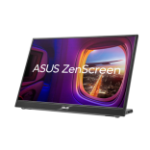 ASUS ZenScreen MB16QHG computer monitor 40.6 cm (16") 2560 x 1600 pixels WQXGA LCD BlackSpecial Price £404.57 £485.48 Regular Price £493.72Out of stock
ASUS ZenScreen MB16QHG computer monitor 40.6 cm (16") 2560 x 1600 pixels WQXGA LCD BlackSpecial Price £404.57 £485.48 Regular Price £493.72Out of stock -
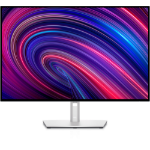 DELL UltraSharp 30 USB-C Hub Monitor - U3023ESpecial Price £385.00 £462.00 Regular Price £493.39
DELL UltraSharp 30 USB-C Hub Monitor - U3023ESpecial Price £385.00 £462.00 Regular Price £493.39 -
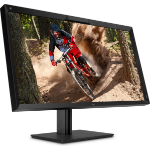 HP DreamColor Z31x computer monitor 79 cm (31.1") 4096 x 2160 pixels 4K Ultra HD LED BlackSpecial Price £2,963.37 £3,556.04 Regular Price £3,616.32
HP DreamColor Z31x computer monitor 79 cm (31.1") 4096 x 2160 pixels 4K Ultra HD LED BlackSpecial Price £2,963.37 £3,556.04 Regular Price £3,616.32 -
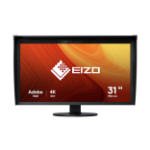 EIZO ColorEdge CG319X LED display 79 cm (31.1") 4096 x 2160 pixels 4K DCI BlackSpecial Price £3,687.50 £4,425.00 Regular Price £4,500.00
EIZO ColorEdge CG319X LED display 79 cm (31.1") 4096 x 2160 pixels 4K DCI BlackSpecial Price £3,687.50 £4,425.00 Regular Price £4,500.00
Everyday Business Tasks:
While high resolution offers undeniable benefits, it's not always necessary for everyday tasks like email, basic document editing, or web browsing. Full HD (1920 x 1080) resolution remains a viable option for such activities, offering a good balance between image quality and affordability.
-
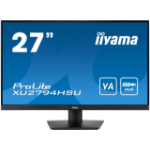 iiyama ProLite XU2794HSU-B1 computer monitor 68.6 cm (27") 1920 x 1080 pixels Full HD LCD BlackSpecial Price £94.40 £113.28 Regular Price £115.20Out of stock
iiyama ProLite XU2794HSU-B1 computer monitor 68.6 cm (27") 1920 x 1080 pixels Full HD LCD BlackSpecial Price £94.40 £113.28 Regular Price £115.20Out of stock -
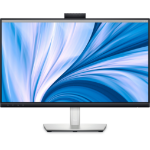 DELL C Series 24 Inch Video Conferencing Monitor - C2423HSpecial Price £190.15 £228.18 Regular Price £232.04
DELL C Series 24 Inch Video Conferencing Monitor - C2423HSpecial Price £190.15 £228.18 Regular Price £232.04 -
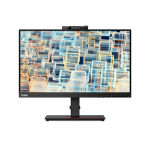 Lenovo ThinkVision T22v-20 LED display 54.6 cm (21.5") 1920 x 1080 pixels Full HD BlackSpecial Price £261.45 £313.74 Regular Price £319.06
Lenovo ThinkVision T22v-20 LED display 54.6 cm (21.5") 1920 x 1080 pixels Full HD BlackSpecial Price £261.45 £313.74 Regular Price £319.06 -
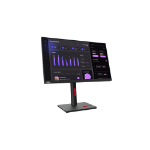 Lenovo ThinkVision T24i-30 LED display 60.5 cm (23.8") 1920 x 1080 pixels Full HD BlackSpecial Price £137.07 £164.48 Regular Price £167.27
Lenovo ThinkVision T24i-30 LED display 60.5 cm (23.8") 1920 x 1080 pixels Full HD BlackSpecial Price £137.07 £164.48 Regular Price £167.27 -
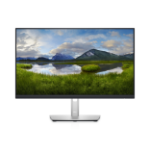 DELL P Series P2422HE LED display 60.5 cm (23.8") 1920 x 1080 pixels Full HD LCD BlackSpecial Price £171.10 £205.32 Regular Price £208.80
DELL P Series P2422HE LED display 60.5 cm (23.8") 1920 x 1080 pixels Full HD LCD BlackSpecial Price £171.10 £205.32 Regular Price £208.80
Refresh Rate:
The Art of Seamless ScrollingRefresh rate, measured in Hertz (Hz), refers to the number of times a monitor refreshes the image per second. A higher refresh rate translates to smoother visuals and minimizes screen tearing, especially noticeable in fast-paced scenarios.
Heavy Multitasking and Video Conferencing: For professionals who multitask extensively and frequently participate in video conferences, a refresh rate of at least 75Hz is recommended. This ensures smoother scrolling through documents and minimizes motion blur during video calls, resulting in a more comfortable and efficient work experience.
Fast-paced Applications: If your work involves applications with frequent scrolling or quick transitions, like real-time stock charts or design software, consider a monitor with a refresh rate of 120Hz or higher. This eliminates visual lag and enhances overall responsiveness, allowing you to navigate these applications with greater ease.
-
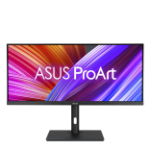 ASUS ProArt PA348CGV computer monitor 86.4 cm (34") 3440 x 1440 pixels UltraWide Quad HD BlackSpecial Price £794.46 £953.35 Regular Price £969.50
ASUS ProArt PA348CGV computer monitor 86.4 cm (34") 3440 x 1440 pixels UltraWide Quad HD BlackSpecial Price £794.46 £953.35 Regular Price £969.50 -
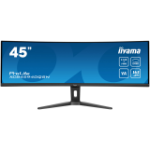 iiyama G-MASTER 45"LCD Curved Bus. UWQHD computer monitor 114.3 cm (45") 5120 x 1440 pixels Dual QHD LED BlackSpecial Price £753.96 £904.75 Regular Price £920.09
iiyama G-MASTER 45"LCD Curved Bus. UWQHD computer monitor 114.3 cm (45") 5120 x 1440 pixels Dual QHD LED BlackSpecial Price £753.96 £904.75 Regular Price £920.09 -
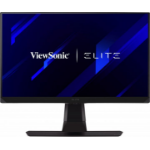 Viewsonic XG320U computer monitor 81.3 cm (32") 3840 x 2160 pixels 4K Ultra HD LED BlackSpecial Price £913.32 £1,095.98 Regular Price £1,114.56
Viewsonic XG320U computer monitor 81.3 cm (32") 3840 x 2160 pixels 4K Ultra HD LED BlackSpecial Price £913.32 £1,095.98 Regular Price £1,114.56 -
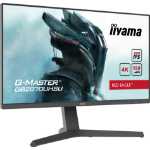 iiyama G-MASTER GB2870UHSU-B1 computer monitor 71.1 cm (28") 3840 x 2160 pixels 4K Ultra HD LED BlackSpecial Price £542.39 £650.87 Regular Price £661.90
iiyama G-MASTER GB2870UHSU-B1 computer monitor 71.1 cm (28") 3840 x 2160 pixels 4K Ultra HD LED BlackSpecial Price £542.39 £650.87 Regular Price £661.90 -
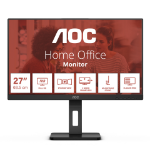 AOC E3 27E3QAF LED display 68.6 cm (27") 1920 x 1080 pixels Full HD BlackSpecial Price £130.20 £156.24 Regular Price £158.89
AOC E3 27E3QAF LED display 68.6 cm (27") 1920 x 1080 pixels Full HD BlackSpecial Price £130.20 £156.24 Regular Price £158.89 -
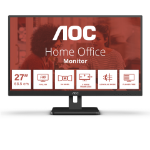 AOC 27E3UM/BK computer monitor 68.6 cm (27") 1920 x 1080 pixels Full HD BlackSpecial Price £124.11 £148.93 Regular Price £151.46
AOC 27E3UM/BK computer monitor 68.6 cm (27") 1920 x 1080 pixels Full HD BlackSpecial Price £124.11 £148.93 Regular Price £151.46
Share on Facebook
Share on Twitter
Share on Pinterest
Search Posts
Categories
- Technology Posts (88)
- Managed Services Posts (7)
- Cyber Security Posts (34)
- Data Storage Posts (1)
- Networking Posts (2)
-
Sector
(13)
- Education Posts (11)
- New Partners (2)
Recent Posts
Archive
Tags
technology
education
Web Application
Web Applications
Application firewall
CloudGen Application Firewall
Application security flaws
WAF
Cloud WAF
Virtual WAF
Host based WAF
Cloud based WAF
Application Control
Safeguard web applications
Availability of web services
Web Application Firewall
information technology
laptops
Lenovo
education technology
cyber security
Censornet
cybersecurity
benefits
Microsoft
computers
HP
tablet
business monitor
business technology
AI
artificial intelligence
Censornet security awareness training
security awareness training
servers
ransomware
KnowBe4 Security Awareness Training
KnowBe4
KnowBe4 Security
Phishing training
Cybersecurity awareness training
Employee security training
Data protection training
Cybercrime
Security culture
headphones
wireless headphones
noise cancellation
networking switch
business switch
